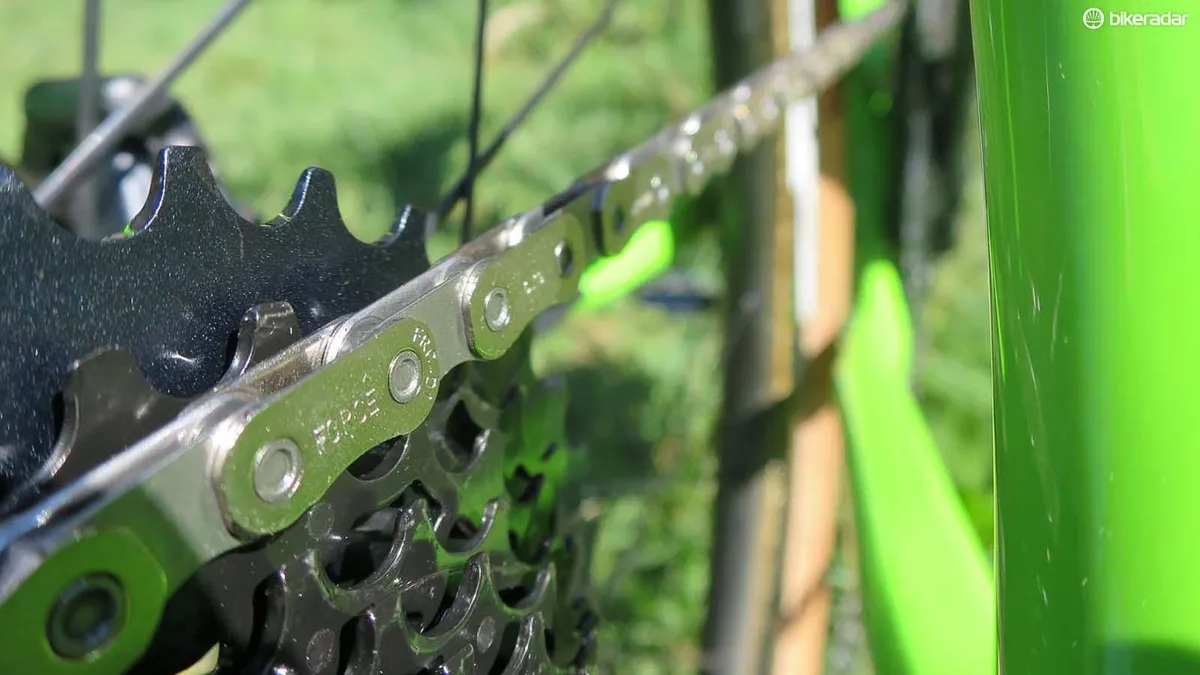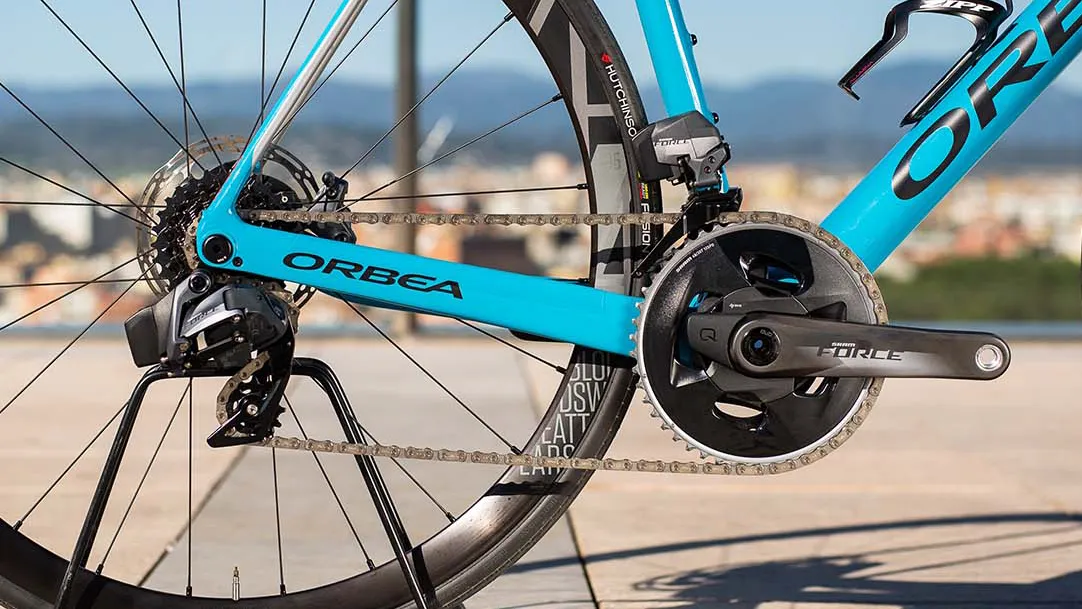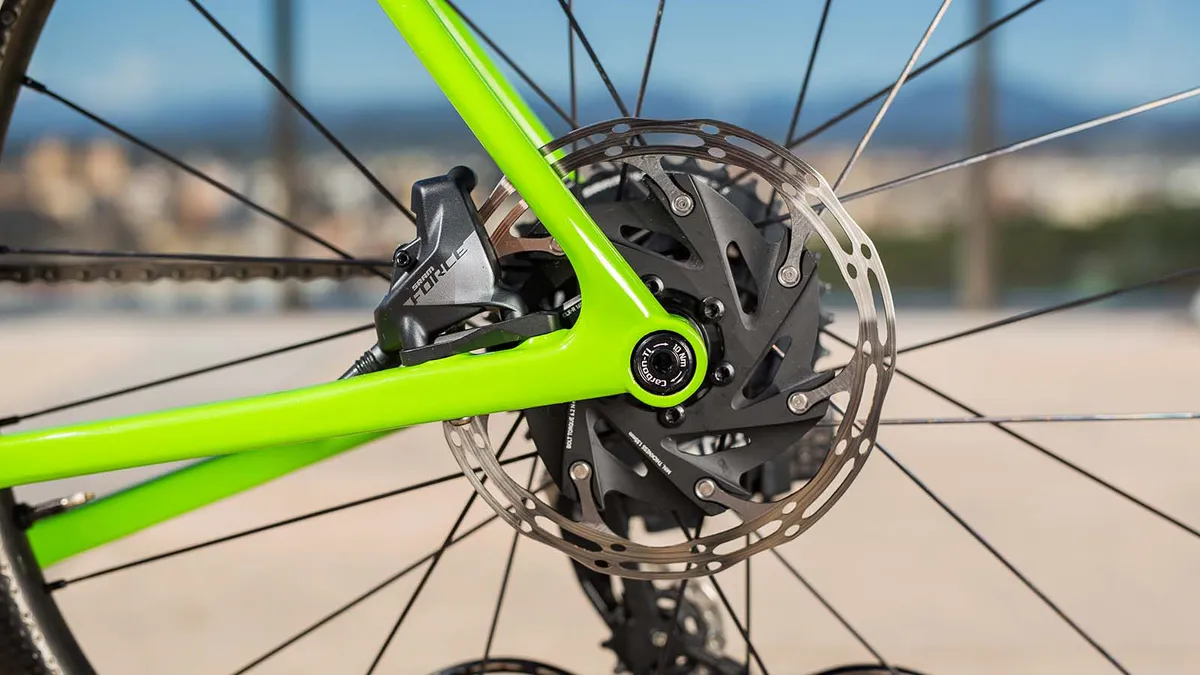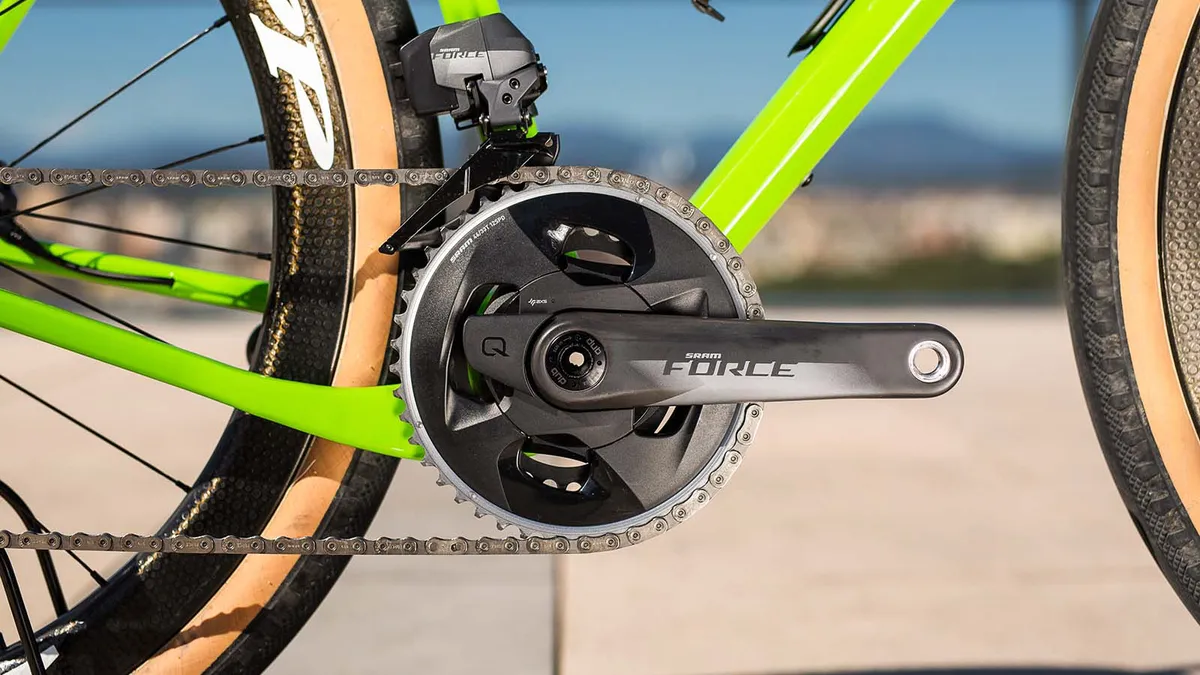SRAM launched Force eTap AXS early in early 2019 — a cheaper alternative to its premier 12-speed wireless RED eTap AXS groupset that was released a few months before. Force eTap AXS takes direct aim at the dominance of Shimano’s Ultegra Di2, and since the launch of the former, we've put the two groupsets head-to-head.
What is the difference between SRAM Red eTap AXS and SRAM Force eTap AXS?
The new Force eTap AXS groupset shares the same motors as RED, as well as the faster signal transfer and the new more powerful chipset.
To make the group more affordable, some of RED eTap AXS’s other bells and whistles have been stripped back.
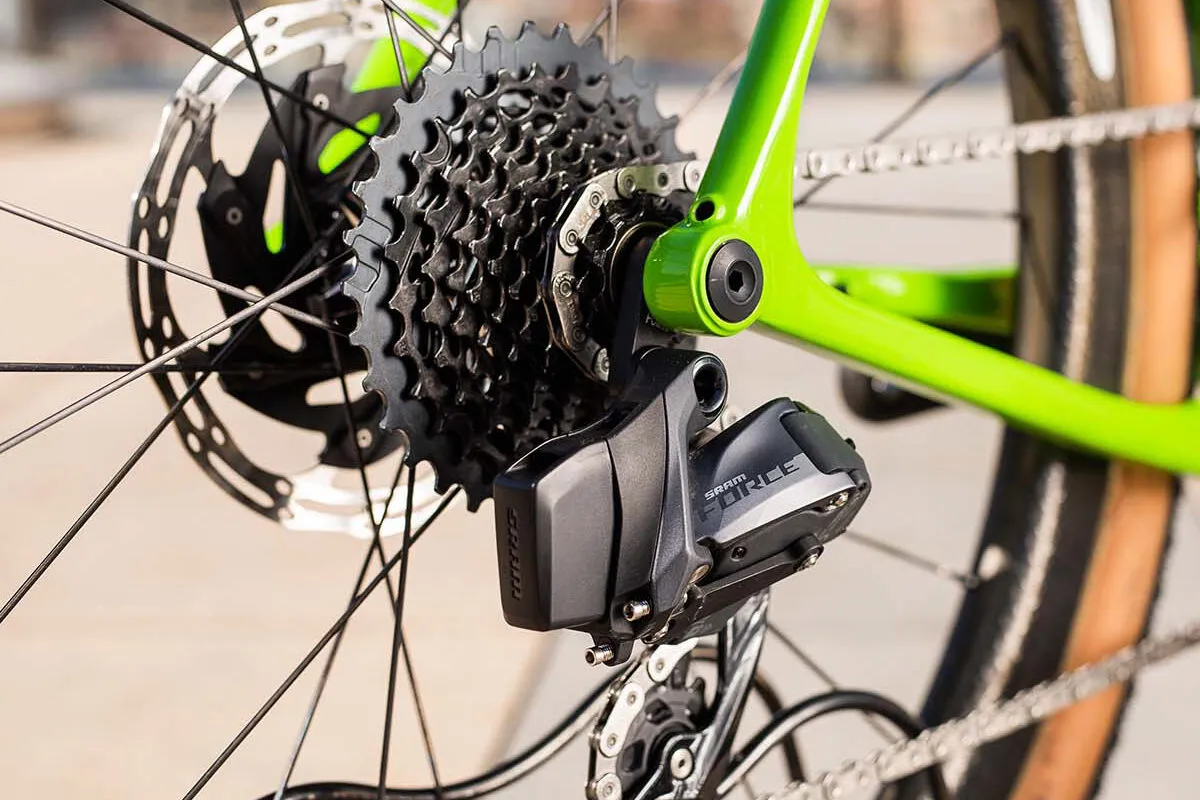
The biggest difference comes with the chainset. RED’s elaborate — and expensive — one-piece X-Dome design has been replaced by two separate rings and a more traditional spider-based connection between chainrings and cranks.
The power meter option (based on sister brand Quark’s D-Zero technology) is also spider-mounted rather than integrated into the direct-mount chainrings.
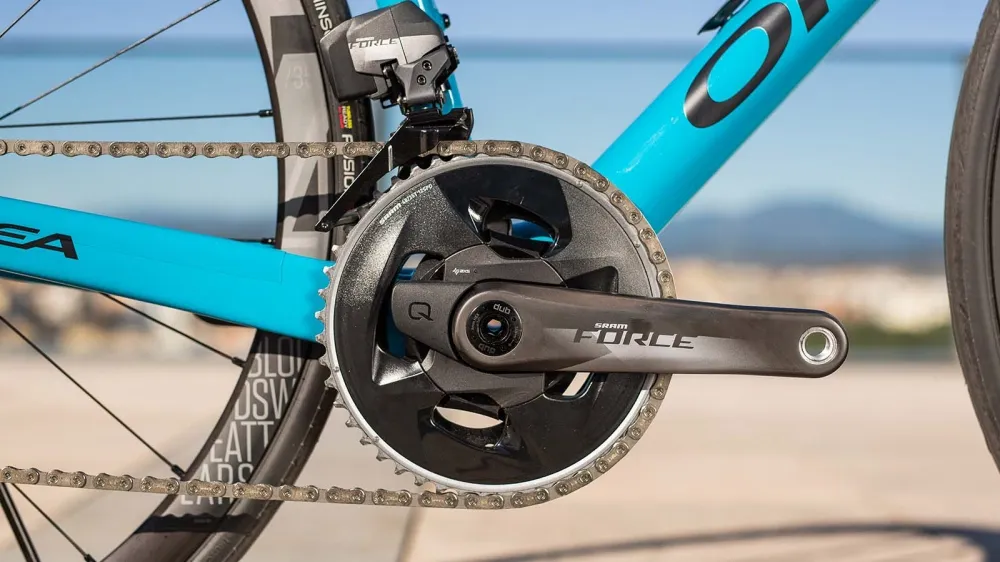
The options on the Force chainset have also been reduced. For a 2x system, you get 48-35 (with a similar, but wider range than an 11-speed 52/36) and 46-33 (with a similar, but wider range than an 11-speed 50/34). RED gets the 50-37 option — closest to a 53/39.
For a 1x system, there are 36, 38, 40, 42, 44, 46 and an aero 48t ring options. But, as with RED eTap AXS, you can mix and match Force with SRAM’s new AXS eTap range for mountain bikes. So, if you fancy a Franken-drivetrain, that’s a real possibility.
The crank arms are similar in shape, but whereas RED features SRAM’s latest Exogram technology for superlight, hollow carbon arms, Force uses a more modest (though still light) solid carbon construction.
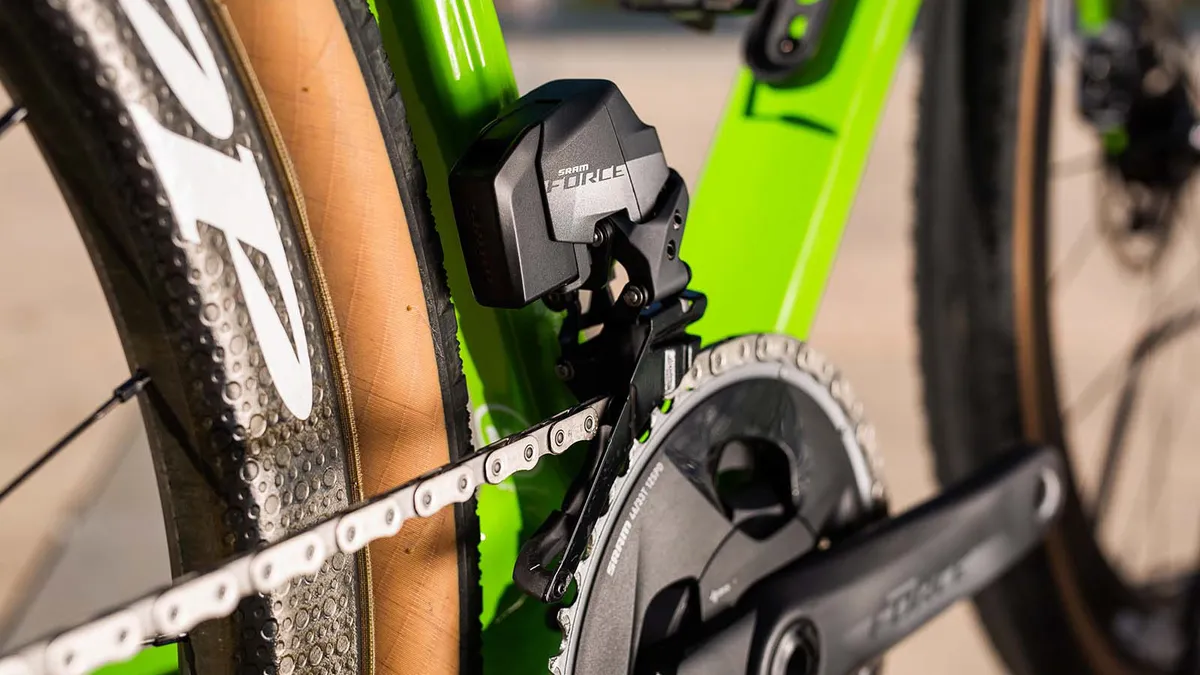
The front and rear mechs share the same design as RED, but the cage on the front of the Force mech is made from steel rather than lightweight aluminium. The cage at the rear is a combination of a metal back plate and LFRT (long fibre-reinforced thermoplastic) rather than carbon.
The larger X-Sync pulleys are retained but now run on stainless steel rather than ceramic bearings.
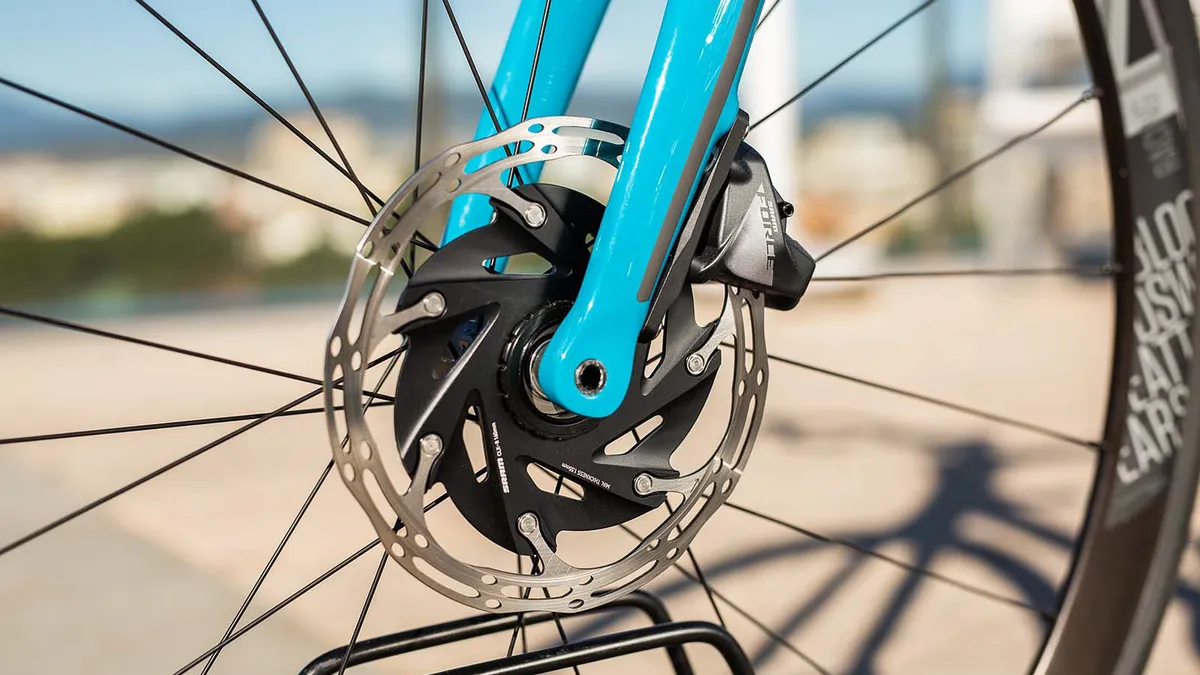
There is one rear mech for both 1x and 2x systems and, like RED, Force features SRAM’s clever Orbit system, which means you don’t need a clutch for chain retention.
The fluid damper is in the pivot at the top jockey wheel axle and the faster it moves the more the resistance builds.
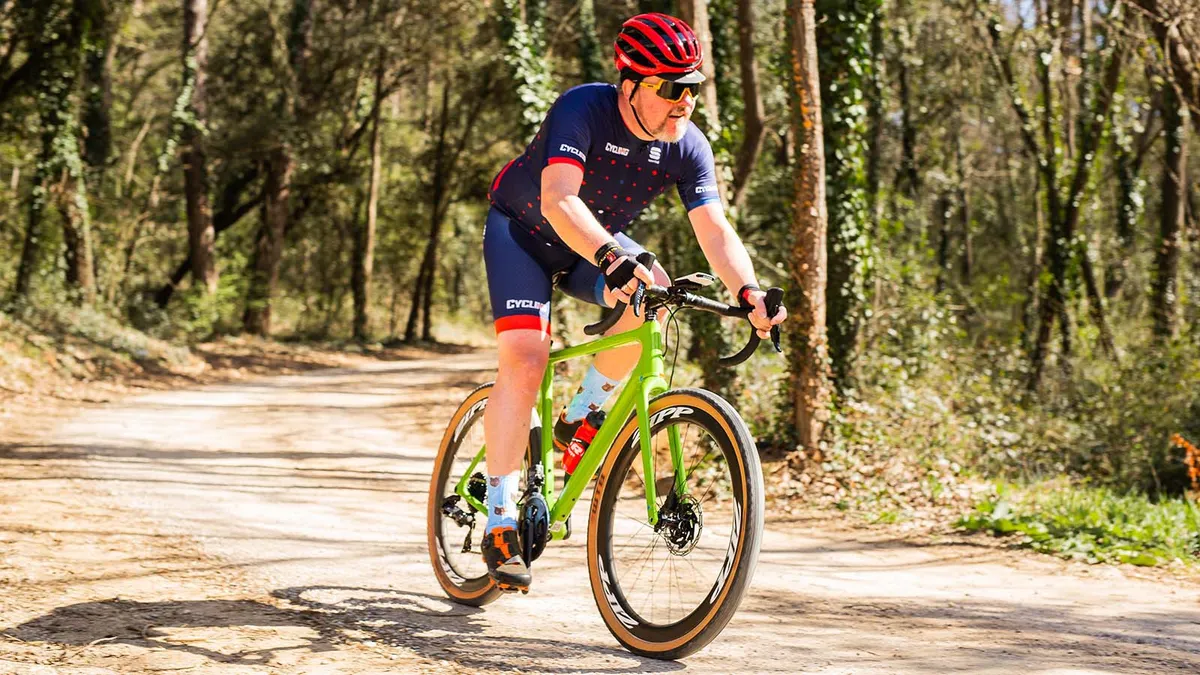
We’ve tried the Force groupset on a few long gravel rides in the short time we’ve had it and the mech really impresses, with no chatter or bounce on rough sections.
Force gets SRAM’s unique new chain with its flat-topped profile. It’s made of the same ultra-bright Hard Chrome as RED, but has solid rather than hollow pins, so it’s a little heavier (266g vs RED’s 249g for a 114 link chain).
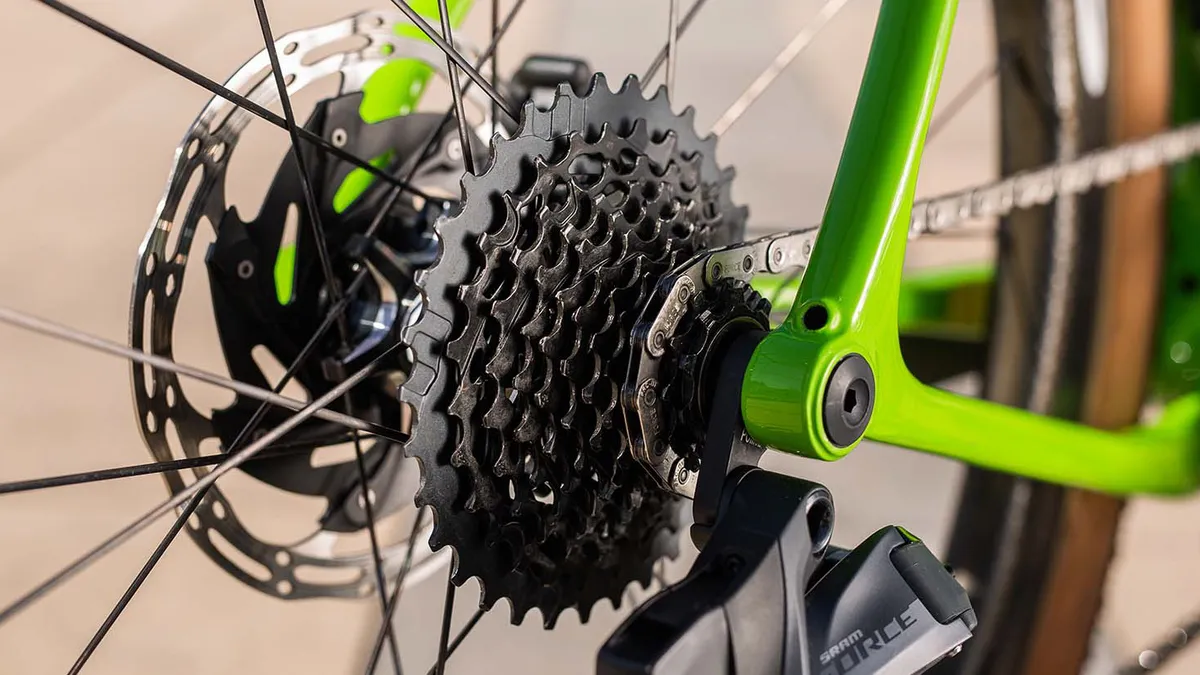
Force’s 12-speed cassette is also built differently, using the pin-dome technology that was developed for SRAM's 1x mountain bike cassettes.
It may not have the high-tech elaborate machining of RED, but about 100 pins bind the sprockets together and the jet-black finish is a result of the hard electrodeposit (ED) coating.
The cassette works on the same XDR standard as RED, so you’ll need a wheel with a compatible freehub.
SRAM AXS app
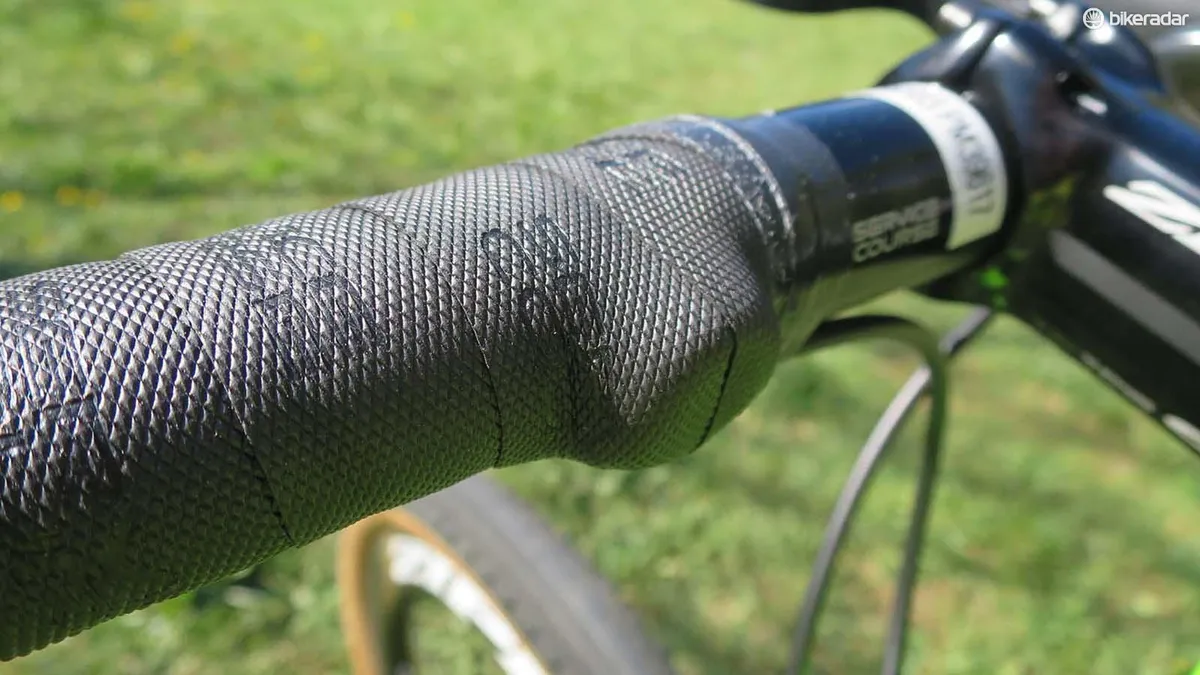
Force eTap can also be used with SRAM’s AXS app to check battery levels in the mechs, shifters and power meter (if you go for that option). It can also be used to assign up and down shifts to whichever button you prefer, including the optional blips.
You can assign the groupset to work in one of two semi-automated ways;
- Sequential — when you activate the next available gear in either direction, it will automatically actuate the front derailleur to keep the ratio increase or decrease even between shifts and your cadence steady (though it can be overridden to front shift)
- Compensating — smooths out gear shifts, so when you change the front ring (either up or down) it compensates at the rear derailleur, moving either one or two cogs to keep your gear progression even and your cadence steady.
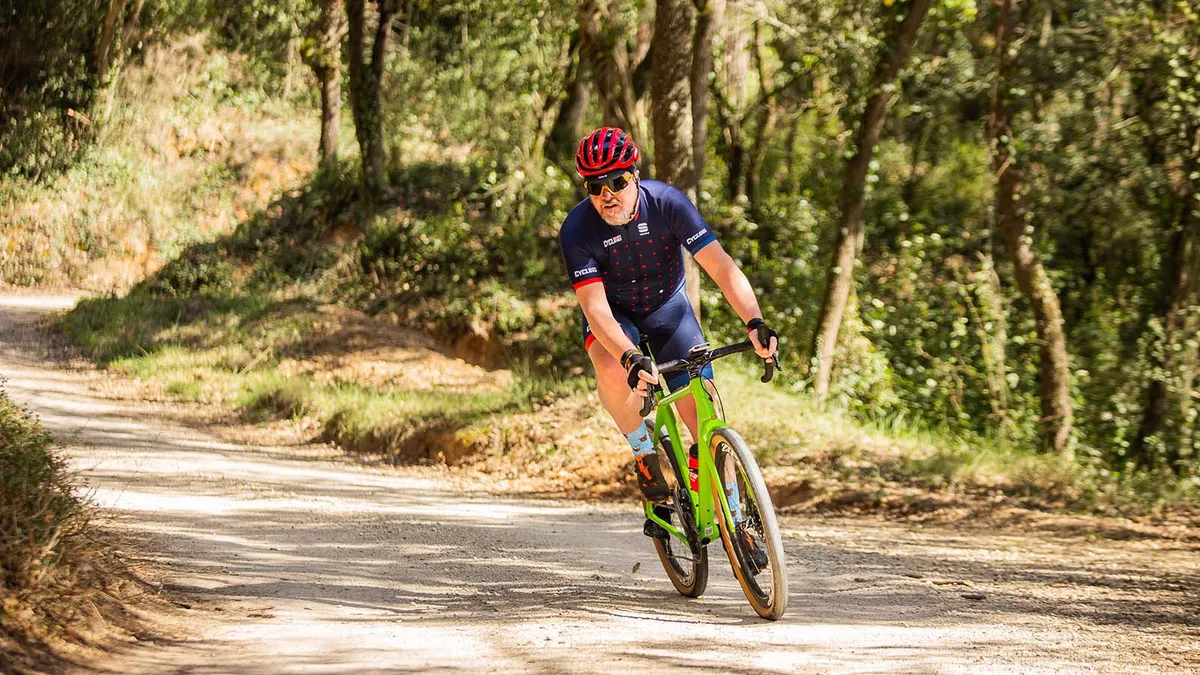
It’s smart stuff and once you’ve assigned your system to one of these you can switch it on or off while riding by pressing the small LED button on the back of the shifter lever.
Force uses the same DUB (Durable Unifying bottom bracket) system as RED.
As the name suggests, it isn’t a new standard but something that works across the myriad press-fit standards and traditional designs (BB30, PF30, BBright, PF30a, 386, PF86.5, GXP and BSA).
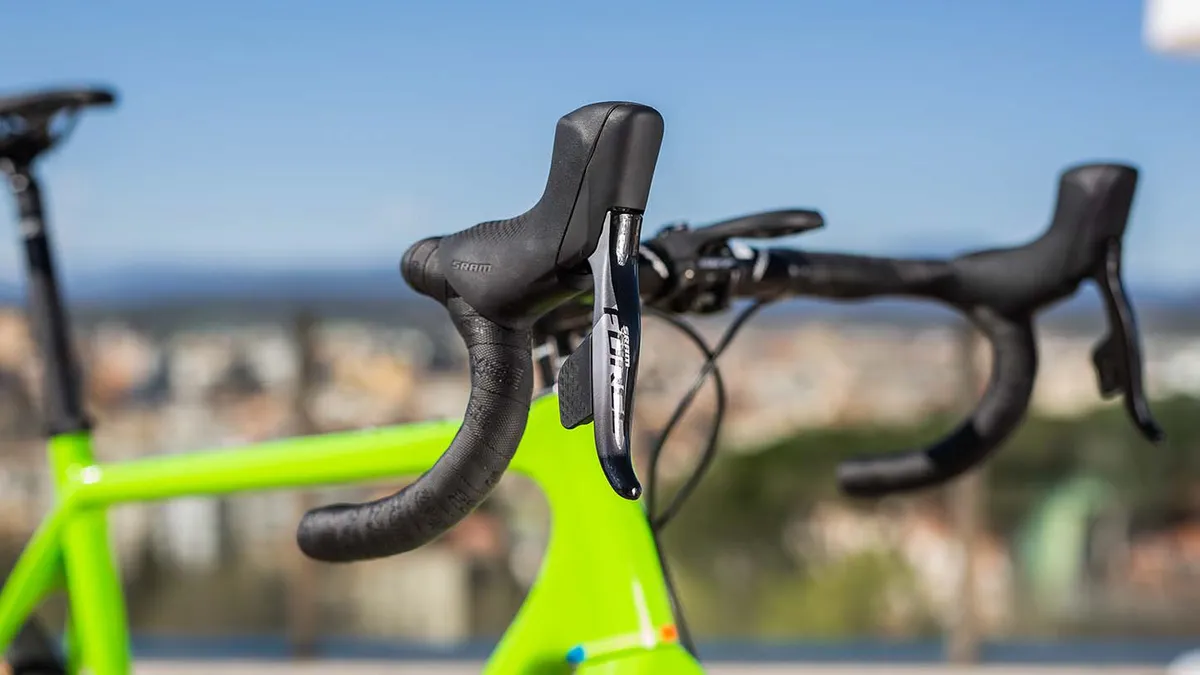
The design of the shifter unit is much the same as RED too, although, like the cage plates, the levers are made of LFRT and there is a single blip (eTap’s remote shifter button) on each lever rather than the two offered by the RED.
The feel of the Force lever is pretty much identical to RED and you’d be hard pushed to tell the difference — although, as expected, RED saves you a few grams.
SRAM’s 12-speed philosophy
We covered SRAM’s 12-speed philosophy in our RED eTap AXS review, but it’s worth repeating in case you missed it.
SRAM developed a new type of freehub body — the XD Driver — for the dirt, which introduced 12-speed gearing to its flagship Eagle groupset, and has cleared the path for use on the road too.
The XD driver had been adapted for the road, with the XDR driver, which is ever so slightly wider than its off-road equivalent, allowing for a smaller 10-tooth sprocket. This opens a whole new set of numbers to achieve even bigger gear ranges.
With 12-speed Force you can forget the established chainring pairing of 52/36 and 50/34, and cassettes such as 11-25, 11-28 and 11-32.
Force eTap AXS gear numbers
The new gear numbers look like this:
ArrayThe chainring sizes are reduced and the cassettes look broadly similar, but what you get is harder and easier gears at both ends of the spectrum, across all combinations.
It’s not just the wider range where AXS seems to have an advantage on the competition, but in smoother progression between gears, with more single tooth jumps across all cassette blocks.
At the rear, the 10-28 (equivalent to an 11-28) has seven sprockets with single-tooth jumps from the 10 to the 17, compared to an 11-28 which has just four (11-15).
Up front, the chainring sizes are smaller — 48/35 and 46/33 — so, the tooth difference is reduced to 13, compared to 16 on the traditional equivalents (52/36 and 50/34).
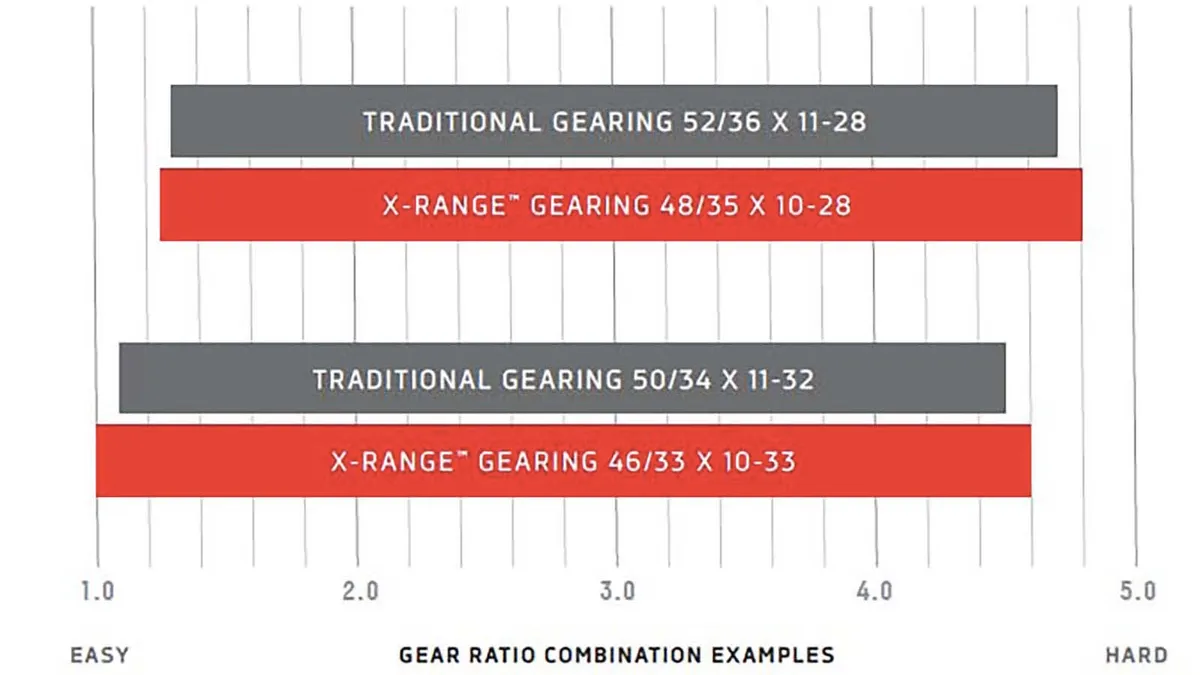
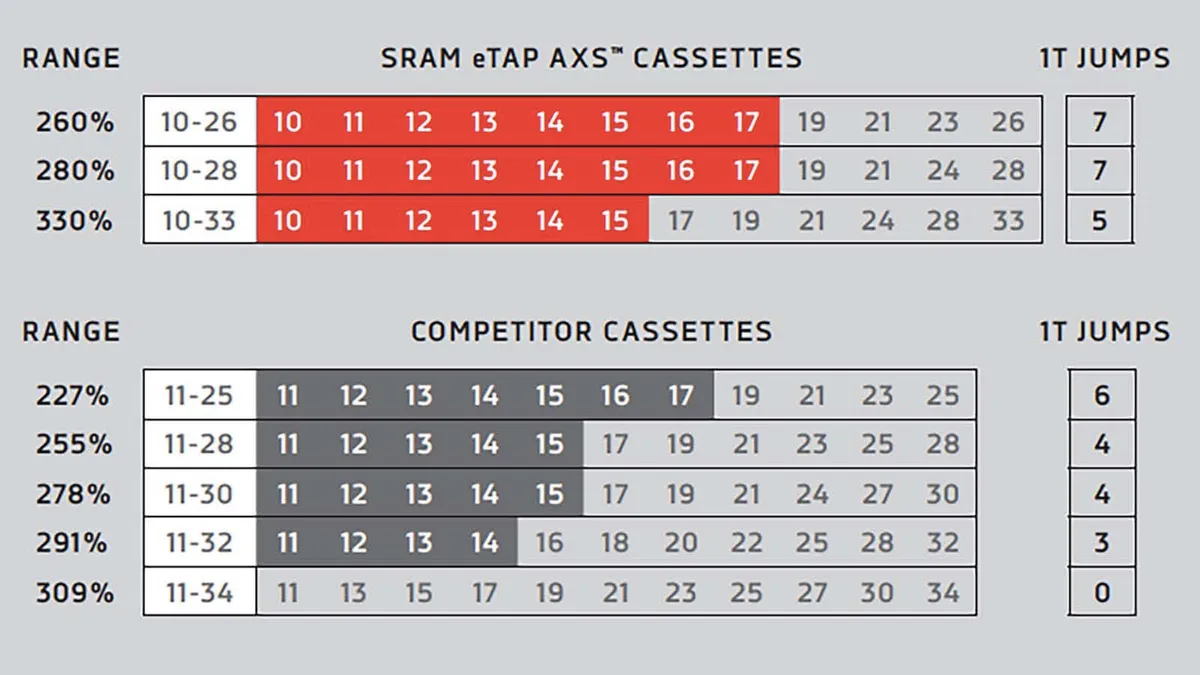
The differences between the Force and the RED eTap AXS have little impact on its functionality, though.
We’ve only been using the Force for a short time but first impressions suggest it feels, shifts and brakes as impressively as its premium-priced sibling.
We’ve now got our hands on a bike for some long-term testing, so we can report back on how it performs.
SRAM is cagey about revealing too much about its plans for its road groups, but if it can continue this type of smart thinking it could well be able to disrupt Shimano’s near monopoly on road bike drivetrains.
What bikes are available with SRAM Force eTap AXS?
SRAM’s Force eTap AXS will be available on a whole host of bikes with brands such as Specialized, Trek, Canyon, Orbea, BMC, Giant, Liv, Scott, Lapierre, Cannondale, Cervelo, 3T, Open, Rose, Parlee and Koga all confirmed.
While these should be able to compete with Ultegra Di2-equipped bikes on price, because Force is 12-speed, there isn’t the option to save money on complete builds by choosing cheaper Ultegra substitutes, such as 105 cassettes and chains, or non-Shimano chainsets.
